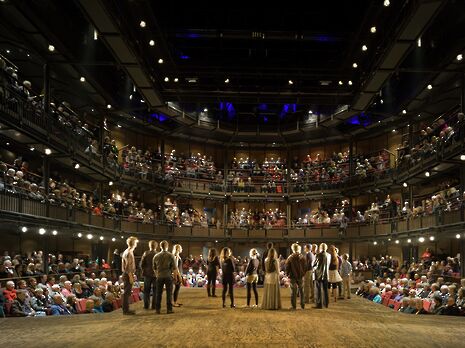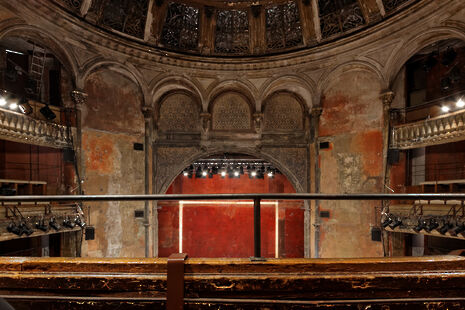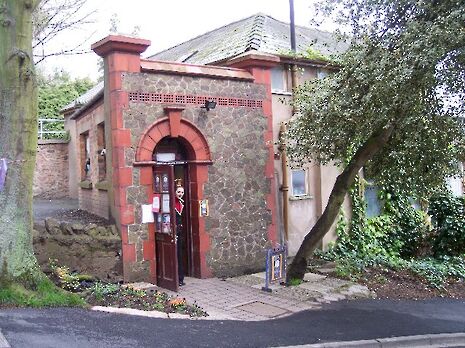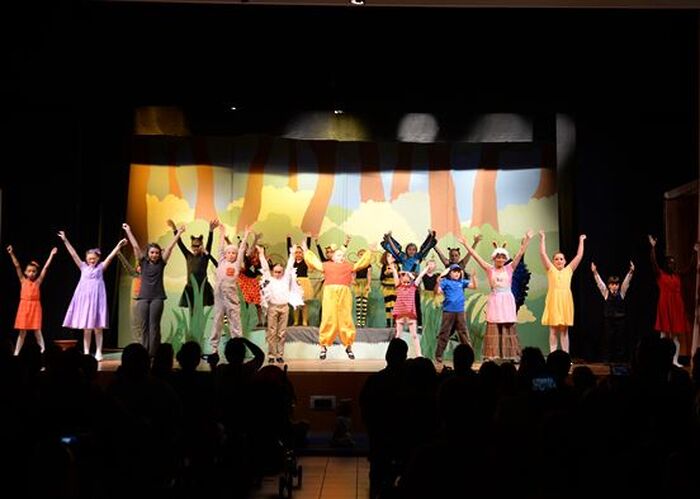Cambridge has the UK’s most vibrant student theatre scene. Let’s celebrate the power of our art
“The fact that theatre has come to mean a building as much as an art is interesting.” Columnist Zoe Barnes shares her take on theatrical space as microcosm

For plenty of people, the word ‘theatre’ will be enough to conjure up images of swathes of red curtain, spotlights and an audience licking their ice cream during the interval or, conversely, a dank, black box-like cellar.
Fortunately, in Cambridge, we have both and more. Cambridge has the most vibrant student theatre scene in the UK, with a dozen or so productions taking place every week in widely different venues, each catering to a different aspect of the Cantabrigian theatrical experience. To a certain extent, it reflects the theatrical outlook in general, and the theatrical spaces and their uses say a lot about the people who choose to use them and the tone they are trying to set.
A theatre setting serves to define the performance and the audience’s relation to it. If you walk into a traditional proscenium arch theatre, you tend to do so expecting a different experience than you might when walking down a back alley to a cloakroom that has been hastily jumbled together to accommodate an audience.

Already, there is the need to discern between that which is fixed and that which can be altered. The proscenium arch is fixed and, more often than not, will play host to fixed traditions of theatre or those that have become fixed, while a venue somewhat out of the ordinary will either take centre stage, detracting from the performance, or allow the performance to speak for itself, free of the associations that might be made within a traditional setting.
Take, for example, the Theatre of Small Convenience in Malvern, the smallest commercial theatre in the world, seating up to 12 people. On 25th February this year it closed its doors, but one can only imagine the dual attractions of it to an audience member and to a director or actor (though it was most predominantly used for puppetry) where the venue is a novelty and of interest within itself, regardless of what is being performed, but where the space available allows for a challenge and to ultimately be completely filled, allowing for the performance to be overwhelming.
However, this differentiation between classical theatre venues and unusual ones, or black box spaces, means that both can be subverted, allowing for the unexpected and all theatre to be adapted to the venue in order to create the most challenging or visually striking piece.
“The fact that theatre has come to mean a building as much as an art is interesting”
An excellent piece of experimental theatre, newly written, complete with audience interaction and varied use of space, can still be performed in a 17th century building, and one of the best Shakespeare productions I’ve ever seen was done in a tiny black studio, the audience sitting on their hands or leaning against a wall.
Historically, in Ancient Greece, theatre would be performed as part of festivals and religious rituals encompassing ceremonies of politics, law, athletics and gymnastics, weddings and even funerals. While the amphitheatre was its home, it would move beyond that, into the temples and the seats of government. For a long time, through the medieval era and beyond, theatre was taken to the road by travelling troupes who would never stay in any one place too long, falling afoul of the puritanical fervour of the time.
The fact that theatre has come to mean a building as much as an art is interesting, much like how church comes to mean the building as much as the congregation – and it is a testament to the place it has taken, moving beyond the town square, that today we are accustomed to sitting quietly and showing respect for the performers.

But what about if you don’t feel catered for in the whole theatrical experience? The establishment of the theatre as a building, and its historical devolvement from a street art practised by a sometimes much derided group of social outcasts, turns it into a business – one that may not make much money, if any at all, but one that must be ruthless in deciding what will keep it afloat.
This could also be argued as to having a role today in growing exclusivity as to who can access theatre, where theatre can be considered as catering to, and performed by, a white middle class, even relative to other forms of entertainment. What if your choices are limited for other reasons? I wrote recently about theatre’s role in a community. What I did not state was that ‘community’ can often be excluding to certain marginalised groups, when venues are not adaptable to their needs.
Recent furore in Cambridge about the Corpus Playroom and its lack of wheelchair accessibility cannot be ignored in discussing the role of venue, and it is important to highlight this, as a petition launched by the Relaxed Theatre Company has highlighted.
“Those who claim to care about the art of theatre should also care about attracting a range of people”
Many older venues will not be adapted to allow for a range of people to enjoy performances, and many more contemporary, underground venues almost have a veneer of not being bothered by such things as accessibility. It should not be required of a performance that it is enjoyed by everyone, or even anyone, but it should be required that everyone has the right to see it and be offended, bored or, god forbid, entertained by it, age restrictions aside.
The physical venue and structure of a theatre is more than just a shell for artistic expression. It is a barrier to some, it constructs an image, whether glorious or foreboding, and it is a source of inspiration, even becoming a muse unto itself.
Those who claim to care about the art of theatre should also care about attracting a range of people with a number of responses to the works presented and, if there is no accounting for personal taste and level of cerebral understanding required in any given instant, effort and money ought to be invested into accommodating that which won’t affect opinion or enjoyment.
Key to that is caring about the most important aspect of the physical body of the theatre - the audience, without whom the theatre is useless and liable to being turned into a shopping mall. It is a lie to suggest that there aren’t ways of doing so while maintaining the original character and design of the structure
 News / Downing investigates ‘mysterious’ underground burial vault 29 December 2025
News / Downing investigates ‘mysterious’ underground burial vault 29 December 2025 Lifestyle / Ask Auntie Alice29 December 2025
Lifestyle / Ask Auntie Alice29 December 2025 News / Unions protest handling of redundancies at Epidemiology Unit30 December 2025
News / Unions protest handling of redundancies at Epidemiology Unit30 December 2025 Features / ‘Treated like we’re incompetent’: ents officers on college micromanagement30 December 2025
Features / ‘Treated like we’re incompetent’: ents officers on college micromanagement30 December 2025 Science / Astronomical events to look out for over the break29 December 2025
Science / Astronomical events to look out for over the break29 December 2025










